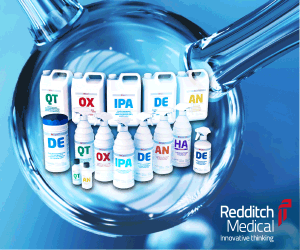Dyson criticises study’s “poor science”
Dyson has criticised a recent study that looked at the merits of paper tissues against hand dryers, and specifically Dyson’s Airblade hand dryer, claiming the study is based on “poor science” and uses “poor methodology”.
The study, headed by Keith Redway, at the Department of Biomedical Sciences at the University of Westminster, and sponsored by the European Tissue Symposium (ETS), the trade association representing tissue paper producers throughout Europe, concluded that “the use of warm air dryers and the Dyson Airblade should be carefully considered in locations where hygiene is paramount”.
However, Toby Saville, senior scientist at Dyson, says the study, which has not been peer-reviewed, was “not good science” and was based on poorly generated data.
The study looked in particular at how well the dryer dries the hands and how many bacteria remain on the hands and dispenser after drying, and whether contamination can travel in splashes from the dispensing devices.
Dyson cites studies carried out in the past in its own labs, and by hygiene and microbiology specialists at Campden BRI, which he claimed go into far more detail and use better designed methods to measure the capabilities of the Airblade, the only dryer to use HEPA-filtered air and to have NSF International accreditation.
A major criticism by Saville of the Westminster study was the low number of people used in parts of the study, and the fact that some of the data was presented “out of context”, distorting the perception of the results compared with the real situation.
While Saville admitted bacteria levels can build at the base of the Airblade unit, as pointed out in the Westminster study, he argues the same is true of towel dispensers where wet hands transmit bacteria to the dispenser surface on contact.
He said that every component of the Airblade contains silver-based antimicrobial material so even if there is a build-up, the microbes are unable to replicate and eventually die. Dyson also recommends the Airblade is wiped clean regularly with a damp cloth to remove any build up of debris.
The study also investigated the spread of contamination from water splashing out of the sides of the Airblade. The Westminster study got people to place their hands in water containing concentrations of yeast organisms and then placed agar plates on the ground around the dispenser to catch drops of water. The colony growth was then counted. Saville claims that the plots of the final counts were presented in a way that did not show the results in true context and thus made them look high – in a real situation the counts would be not much different from normal background readings for washrooms, he claims.
He said the spread is so small as to be negligible in comparison to the contamination spread from splashes during washing or during moving from the sink, after washing, to the dispenser. As liquid can splash up to 2 metres out from the sides of the Airblades, Dyson says it recommends that the hand dryers should not be located within 2 metres of food preparation surfaces.
Saville added that while Airblades have comparable hygiene benefits to paper towels, they win hands down when it comes to energy and environmental concerns. The energy consumed and cost in providing and disposing of the towels makes the Airblade a more sustainable hygiene option for manufacturers.




